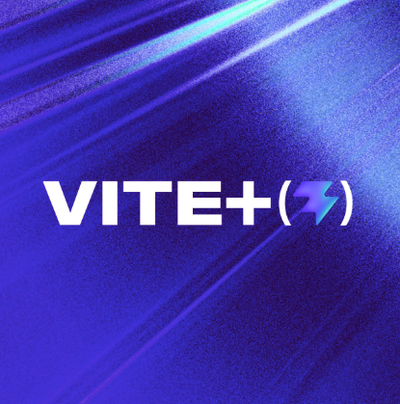
Security News
Vite+ Joins the Push to Consolidate JavaScript Tooling
Evan You announces Vite+, a commercial, Rust-powered toolchain built on the Vite ecosystem to unify JavaScript development and fund open source.
lucid-cardano-partialtx
Advanced tools
A library to export partial transactions (unbalanced, unsigned) and get them
signed and submitted by a frontend PAB. This enables you to re-use your regular
Haskell Contracts while still having a deployment solution for production -
effortlessly.
Contract monad.Contracts, using
Plutip, Contract models etc..sign and .submit on the frontend.cardano-node and plutus-chain-index.Add the proper versions of bot-plutus-interface and plutus-partial-tx as dependencies to your project.
Have the proper versions (usually latest) of cardano-node, cardano-cli, and a corresponding version (same one used by bot-plutus-interface) of plutus-chain-index in $PATH.
Have cardano-node and chain-index running in the background and properly synced. You may simply copy over the provided testnet directory and use the scripts there to set up for testnet. Remember to create the db directory inside testnet/chain-index first!
Usually, if using nix, plutus-chain-index is already included by BPI. All you have to do is make it available in the nix shell by adding project.hsPkgs.plutus-chain-index.components.exes.plutus-chain-index to nativeBuildInputs.
NOTE: The provided example is using the preview testnet.
NOTE: You need to use a vasil compliant version of BPI. Mainline BPI does not support vasil yet. Use the
gergely/vasilbranch instead.
How you set up the frontend is entirely upto you, as long as it can query the Haskell server to obtain a PartialTx - and use it with lucid-cardano and lucid-cardano-partialtx, it's enough.
See Berry-Pool/lucid for adding Lucid to your dependency.
NOTE: You need to use a vasil compliant version of Lucid. Mainline Lucid does not support vasil yet. Use the
vasilbranch instead.
For lucid-cardano-partialtx (provided by this repo), there are three ways to import it:
Install the npm package:
npm install lucid-cardano-partialtx
Import in your file:
import { mkPartialTxInterpreter } from "lucid-cardano-partialtx";
Aside: You can use webpack or similar to bundle your Node project to run on the browser. See full example that does this
Simply import from deno.land:
import { mkPartialTxInterpreter } from "https://deno.land/x/lucid_partialtx@0.1.3/mod.ts";
Aside: You can use ESBuild or similar to bundle your Deno project to run on the browser. However, you should to replace the
deno.landimports with the browser package url if running in a browser environment. See lucid-partialtx/build.ts that does something similar (but only after generating a node package).
<script type="module">
import { mkPartialTxInterpreter } from "https://unpkg.com/lucid-cardano-partialtx@0.1.3/web/mod.js";
</script>
Aside: This is pure JS directly running in the browser: probably not too practical for large projects.
Once you have the environment set up, your haskell server merely has to use BPI (bot-plutus-interface) to run your contracts returning PartialTxs. You can hook up BPI with the testnet quite easily: simply copy over the BPI.Testnet.Setup module from the example.
A simple servant server, showcasing a simple Contract usage, can be found in example/Main.
All you have to do is create a PartialTxInterpreter by passing your Lucid instance to mkPartialTxInterpreter, make an API call to receieve the PartialTx from your server, and pass it through the interpreter. The resulting Lucid Tx can be modified further or directly signed, and submitted.
See example/frontend/src/index.ts.
There is a full example with servant, BPI, and Lucid that can run a dummy
minting contract on the testnet. Check the haskell code
in the example directory. The gist is that you can copy over
BPI.Testnet.Setup and use the exposed interface to create PartialTxs in the
context of the testnet.
The example frontend is in example/frontend.
To run the project and run stuff on the testnet, head inside the nix shell by
doing nix develop, and follow these steps:
You need to fill a config.json and put it in example/frontend/config.json, this
config should contain your blockfrost API access key:
{
"blockfrostUrl": "TESTNET_BLOCKFROST_URL",
"blockfrostProjId": "TESTNET_BLOCKFROST_PROJID"
}
Aside: Of course, you can also deploy all this in production by switching out to connect to the mainnet in the BPI setup and blockfrost setup.
cardano-node and plutus-chain-index in backgroundYou'll also need cardano-node and chain-index running in the background,
properly connected to testnet.
Unless the directory testnet/chain-index/db already exists, you should create an empty directory: mkdir testnet/chain-index/db.
All you have to do run make services.
This will take some time to sync. You can see the node logs in
testnet/node.log and chain index logs in testnet/cix.log. You can query the
node sync progress by running make query-tip.
Note: Remember to stop these background services when you're done! Use
make stop-servicesto do so.
Firstly, run make build-lucid-lib at the root project directory.
Now, head inside the example/frontend directory and run the following commands:
npm i - to install all the npm dependenciesnpx webpack - to build the projectAlternatively, if you've already done npm i and have the node_modules from
it - you can run make build-frontend from the root project path.
Once the node has synced and all the previous steps have been completed, run
make serve. Head to localhost:8080 to see a beautiful frontend with a
singular dummy minting button!
Note: You'll need a wallet supporting Vasil for signing and submission to
work properly. In particular, mainline Nami does not support vasil yet. You need to use the vasil branch of nami.
Here's the core idea:
Keep your Haskell contracts as they are, just make them return UnbalancedTx
using
Ledger.Constraints.mkTx.
Alternatively, make them return the ScriptLookups and the TxConstraints.
Use either of the two functions provided within this repo to create a
PartialTx:
import Plutus.Contract.PartialTx
mkPartialTx ::
( FromData (DatumType a)
, ToData (DatumType a)
, ToData (RedeemerType a)
) =>
ScriptLookups a ->
TxConstraints (RedeemerType a) (DatumType a) ->
Either MkTxError PartialTx
unbalancedToPartial :: UnbalancedTx -> PartialTx
Aside: For your Haskell side tests (Plutip or EmulatorTrace), you'd still want to submit the
UnbalancedTx- which you can still do usingsubmitUnbalancedTx. So callingmkTxfollowed bysubmitUnbalancedTxis effectively the same as just callingsubmitTx(and similar).
In the frontend, bind your Lucid instance to mkPartialTxInterpreter, and use the resulting PartialTxInterpreter to interpret a PartialTx:
type PartialTxInterpreter = (x: PartialTx) => Tx;
mkPartialTxInterpreter(lucid: Lucid): PartialTxInterpreter;
Once you obtain a Lucid Tx, it's as simple as signing and submitting it, which
looks like:
const signedTx = await tx.sign().complete();
return signedTx.submit();
FAQs
Interpreter for partial transactions using lucid-cardano
The npm package lucid-cardano-partialtx receives a total of 0 weekly downloads. As such, lucid-cardano-partialtx popularity was classified as not popular.
We found that lucid-cardano-partialtx demonstrated a not healthy version release cadence and project activity because the last version was released a year ago. It has 1 open source maintainer collaborating on the project.
Did you know?

Socket for GitHub automatically highlights issues in each pull request and monitors the health of all your open source dependencies. Discover the contents of your packages and block harmful activity before you install or update your dependencies.

Security News
Evan You announces Vite+, a commercial, Rust-powered toolchain built on the Vite ecosystem to unify JavaScript development and fund open source.

Security News
Ruby Central’s incident report on the RubyGems.org access dispute sparks backlash from former maintainers and renewed debate over project governance.

Research
/Security News
Socket researchers uncover how threat actors weaponize Discord across the npm, PyPI, and RubyGems ecosystems to exfiltrate sensitive data.